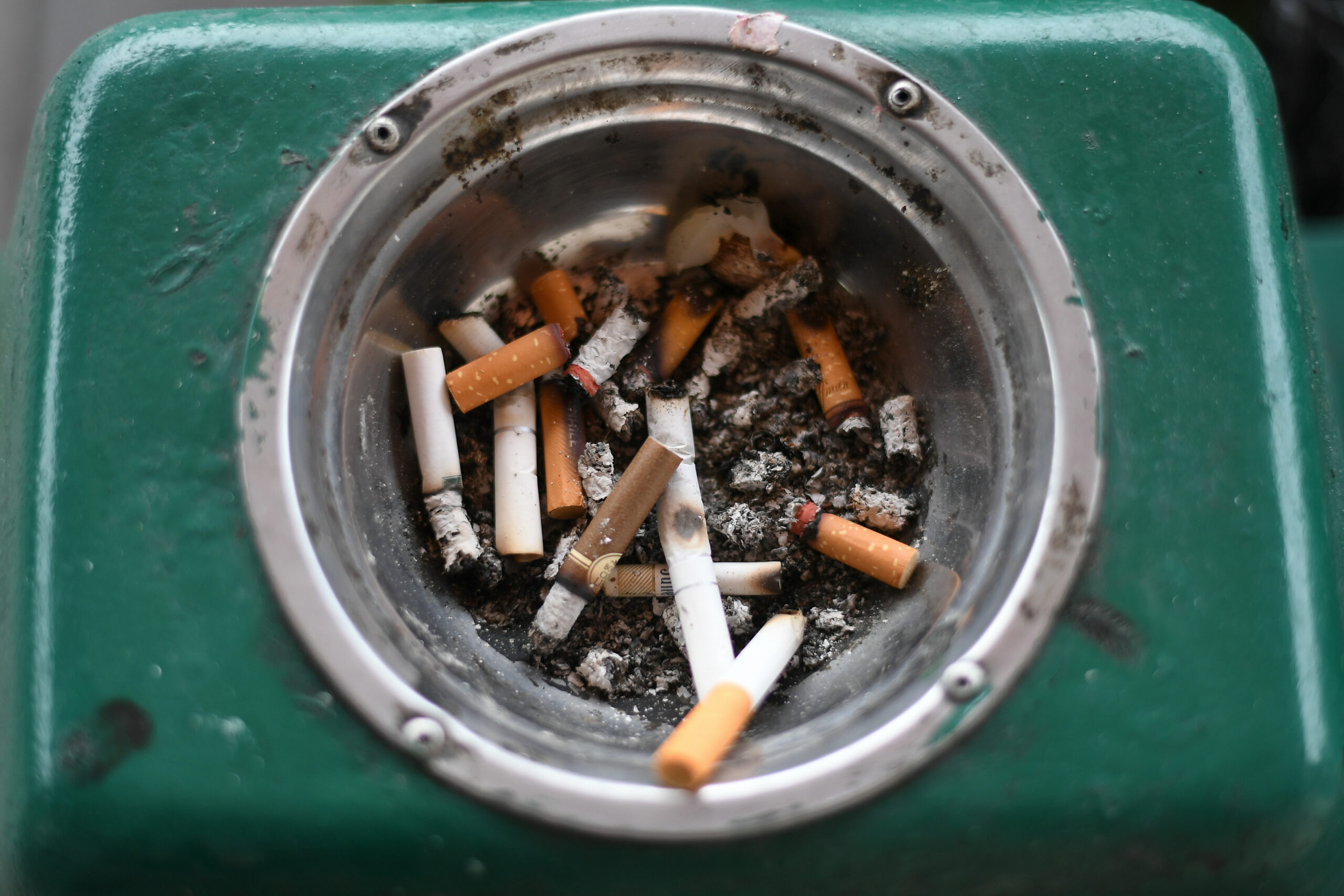Bazil Zubir called his addiction to cigarettes and vape “a sick cocktail of nicotine.”
Like many Malaysian youth, he lit up a cigarette at 17 thinking he wouldn’t get hooked. He even disliked the taste. But before he knew it, cigarettes became the antagonist in his life.
Bazil initially was in denial about his nicotine dependence. “Looking back now, I realise I was addicted. I smoked a pack a day around [ages] 19 through 22. I’m pretty sure my lungs are the colour of charcoal,” he said.
The spectacled and tanned young man with an active lifestyle found he was quick to start panting and had trouble keeping up with his teammates during football and basketball training. Eight years since his first puff, Bazil was more than ready to quit smoking.
The Malaysian government may soon offer him help, along with others who might be forced to wean themselves off the habit through new legislation.
Following New Zealand’s announcement of a plan to progressively raise the legal smoking age each year, accompanied by a ban on tobacco sales to people born after 2008, Malaysia came out with its own version of the initiative to take on tobacco addiction, known as the Generational End Game.
Current tobacco control legislation was approved by the Malaysia Parliament under the Food Act 1983. The updated proposal would prevent anyone aged 17 and younger from legally buying smoking and tobacco products.
During the January executive board session of the World Health Organization (WHO), Malaysian Health Minister Khairy Jamaluddin announced plans for new legislation outlawing anyone born after 2005 from buying tobacco and smoking products, including e-cigarettes, vapes and heated tobacco.
E-cigarettes and vapes produce an aerosol or vapour by heating liquid usually containing nicotine and flavouring. Heated tobacco is designed not to burn or produce smoke.

The harmful effects of nicotine and smoking isn’t groundbreaking news, but Malaysia’s smoking rates are barely declining, only a 1.5% reduction in four years. The Malaysian government estimates the country has 4.9 million smokers, with one in five people over 15 years old consuming tobacco products.
The Malaysian government’s National Health and Morbidity Survey for 2019 found approximately 323,110 of the nation’s smokers were ages 15 to 19. The same survey in 2015 determined 80% of adult smokers began before the age of 21.
Ultimately, the goal is to “reduce the number of new smokers until we reach a time when there are no longer smokers in Malaysia,” Khairy said during his speech for World Cancer Day on 17 February.
A February online poll by health information service CodeBlue, part of the Galen Centre for Health and Social Policy organisation, found 95% of 676 Malaysian respondents supported the age-based purchase ban.
Jennifer Tan, a smoking cessation provider and a member of the Malaysian Pharmacist Society, whose position includes engagement with smokers, said the ban is long overdue and the next step in the nation’s tobacco control policies.
“We have been quite lenient for quite some time. When certain measures [to reduce smoking] are voluntary, we don’t get the results that we want,” Tan said. “Knowledge and awareness doesn’t mean action. Our last option is enforcement and that’s through things like bans.”
But 5% of Malaysians who were polled opposed the legislation, with some saying they were sceptical of the government’s poor track record in smoking ban enforcement.
When certain measures [to reduce smoking] are voluntary, we don’t get the results that we want”
Jennifer Tan, smoking cessation provider and member of the Malaysian Pharmacist Society
Member of Parliament Ong Kian Ming said tobacco regulation needs to have a holistic approach. Policies cannot overlook the presence of illicit cigarettes and current harm reduction strategies like nicotine replacement therapy.
“A much more rigorous debate is needed before it is tabled in parliament,” he told Code Blue.
Destiny Sze, a non-smoker, said the proposed law would serve as only a minor deterrent.
“What’s to stop those born after 2005 to get someone older to buy it for them? This is a problem happening even now with underaged smokers,” Sze said, adding that the oversight method is also problematic.
“This will be infinitely harder to regulate unless the government plans to mandate ID-ing every young person making a tobacco [or] cigarette purchase, and even that has flaws of its own,” Sze said.
Previous government efforts to curb public smoking include the Control of Tobacco Products Regulation 1993, which banned smoking in air-conditioned restaurants and the Control of Tobacco Products Regulation 2004, which was amended in 2018 to ban smoking in all eateries, indoors or outdoors.
Not long after the 2018 ban, diners continued to puff away in restaurants.
Carmelo Ferlito, an economist and CEO of Center for Market Education, an academic and economic think tank in Kuala Lumpur, said the main causes for poor enforcement are restaurant owners’ complacency and the subsequent liberty to smoke.
“The customers are their butter and bread so why [would they] punish them?” he said. “By defending the non-smoker, we are harming the smoker by depriving [their] pleasure from nicotine.”
Tobacco use is the most preventable cause of morbidity and mortality in Malaysia.
The 2012-2016 National Cancer Registry revealed cancer deaths are increasing. There were 64,275 recorded deaths from 2007 to 2011 and 82,601 deaths from 2012 to 2016. Annually, the country has an estimated 27,000 smoking-related deaths.
“The generational ban is aimed at decreasing the uptake of smoking,” said Dr. Helmy Haja Mydin, a respiratory medicine specialist. “Over time, this will decrease the overall prevalence, with corresponding decrease in healthcare costs.”
Malaysia’s government is expected to spend $1.7 billion (MYR7.4 billion) treating major illnesses caused by smoking by 2025. That is more than double the cost of tobacco taxes, which have not increased since 2015, he said.
The tobacco industry in Malaysia has remained profitable… while the government and ordinary families have been left to bear the cost”
Dr. Mary Assunta, senior policy advisor, Southeast Asia Tobacco Control Alliance
Mah Suit Wan, who has provided smoking cessation services for 11 years, believes tobacco industry revenue is unjustifiable.
“Malaysia is spending huge amounts of money in treating smoking-related diseases and possibly e-cigarette or vaping use-associated lung injury cases,” Mah said. “How can we continue to turn a blind eye towards money spent on smoking related diseases as opposed to the economic aspect?”
Dr. Mary Assunta, senior policy advisor at Southeast Asia Tobacco Control Alliance, said the tobacco industry has refused to phase out its product over six decades despite deaths, a lack of compensation for patients and government efforts to protect public health.
“The tobacco industry in Malaysia has remained profitable and made money for its shareholders while the government and ordinary families have been left to bear the cost of treating the sick and burying the dead,” she said.
Questions sent by the Globe to tobacco distributors in Malaysia went unanswered.
The health ministry launched a 2004 anti-smoking media campaign, Tak Nak, aimed at youth that did not yield results. Beginning in 2009, cigarette packaging was required to carry graphic health warnings in a bid to deter non-smokers and encourage smokers to quit.
But the accessibility of smoking products prevented any serious reduction of youth smoking. Cigarettes are available over the counter in convenience stores and restaurants.
Malaysia’s bold Generational End Game will encourage its ASEAN neighbours to follow suit in arresting tobacco’s grip, Assunta said.
But Helmy thinks more than an age-based ban is required to significantly cut smoking rates.
The Malaysia ban would need to be complemented by the WHO Framework Convention on Tobacco Control, known as MPOWER, he said. The WHO initiative includes efforts to monitor tobacco use, provide information about the dangers of tobacco, identify ways to protect people from smoke, raise taxes and encourage methods for quitting.
“Tobacco control policies work in tandem,” Helmy said. “There isn’t one specific policy that will work for everyone or every time.”
Mah agrees, noting that only when easily accessible and affordable smoking cessation efforts and the awareness of harmful effects of e-cigarettes are championed can the government’s Generational End Game initiative succeed.
“We must not let go of any opportunity to help the existing smokers quit,” Mah said.

When e-cigarettes and vapes became mainstream, many smokers became convinced they were a healthy alternative to cigarettes. But the appeal of e-cigarettes as a healthier option and different flavours of vapes have opened a new gateway to nicotine addiction.
“Heated tobacco is not as safe as companies portray it to be,” Tan of the pharmacist society said. “They claim that everything is food grade. But food grade is for your stomach, not your lungs.”
The solution is not switching from one addictive product to another, Assunta said. “This plan to ban sale of tobacco to those born after 2005 is visionary with the clear focus to eventually phase out tobacco in society.”
“The fight is over Malaysia’s minors,” she said. “The tobacco industry wants to continue addicting young people to replace the 27,000 who die annually and secure a lifetime of new smokers.”
When Bazil used cigarettes exclusively, there were clear boundaries of acceptable places to smoke. But after he began vaping, the lines blurred: “I was vaping everywhere. In my room, my toilet, the kitchen, my car.”
“In my opinion, vaping is twice as bad as cigarettes,” said Bazil, who is now 25 and limits himself to two cigarettes per day.
“It’s a good thing they are doing this for the generations to come,” he said of the proposed law. “I personally don’t want my kids to get into smoking in the future.”


